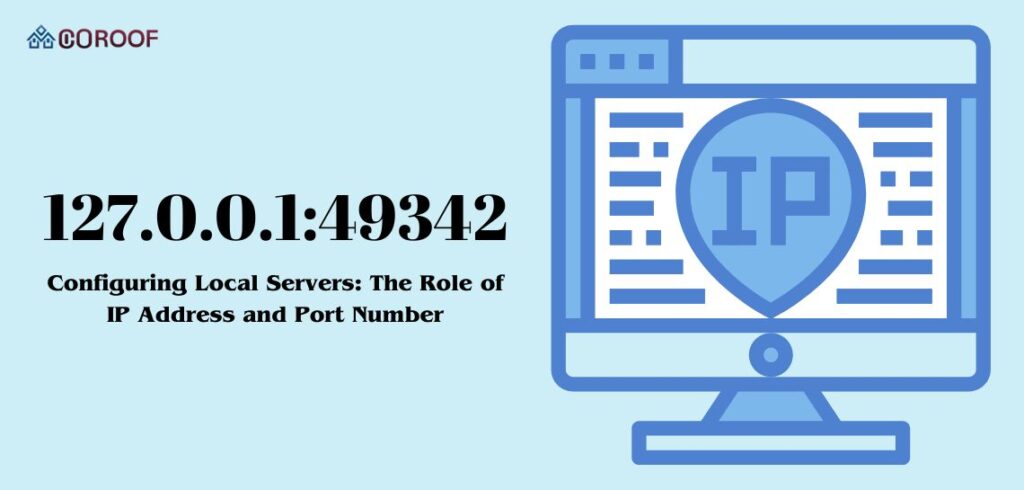Many users have difficulty understanding many of the technical terms and concepts used in the computing industry. One such term that regularly shows up on computer screens when using software is “127.0.0.1:49342“. Most consumers, nevertheless, are still unaware of its significance. To solve this puzzle, it is necessary to comprehend IP addresses, also known as Internet Protocols. It becomes feasible to look for problems once this base is established. We explore the meaning of IP addresses and the importance of comprehending “127.0.0.1:49342” in the sections that follow.
What is 127.0.0.1:49342?
127.0.0.1:49342 is an IP address that has been divided into two main components 127.0.0.1 and 49342.
- 127.0.0.1: The IP address that connects you to the localhost server and makes a connection possible. It’s most likely in this address’s opening section.
- 49342: On the other hand, the port number on your system for this specific task is mentioned in the second section. There is one more phrase for the second section: the IP address folder directory number.
You should not be surprised if you hear this term in connection with this particular IP address. It allows programs that are operating on the same computer to communicate with one another. An external network connection isn’t necessary. This will significantly enhance testing and debugging.
It is used to differentiate and label different programs or services. Both run simultaneously on the same machine. It is important to provide strong security. It will prevent invasions and maintain the proper operation of localhost services.
Types of IP address
Given below are the list of two different type of IP address are:-
- Public IP: Available to all users and reachable via the internet.
- Private IP: inaccessible from the public internet and limited to particular users, devices, and applications within a private network.
Guide To Configuring Local Servers For 127.0.0.1:49342
You will need to have a thorough understanding of server and virtual machine setup and configuration if you need to comprehend technological components of the localhost operation. As a result, we will walk you through each step needed to configure localhost operations.
- Install Server Software: You must install server software such as Apache, IIs, or Nginx in order to operate locally. On your desktop PCs, you must install server software. You may now host your websites or apps locally with the aid of this server.
- Configure Server Software: At this point, you must configure the server software on a designated port, such as port 49342. This server software configuration will enable you to accept inbound connections. Modifying the server configuration file is the alternative.
- Create Field Paths: You must configure your server’s directory paths and permissions. You must make sure that the appropriate directories are set up for your web apps. Ensure that they are accessible both via read and write to the server.
- Verify Server setup: You must check your server setup in this stage. You may accomplish this by going to your website at 127.0.0.1:49342. You should be able to see your website or application operating on your computer if everything is set up properly.
- Use VirtualBox Or Docker: To create and manage virtual environments for virtual machines, you must use software such as VirtualBox or Docker.
Tips when using the 127.0.0.1:49342
When accessing 127.0.0.1:49342, you should be aware of the following security alerts.
- If your services are not adequately protected, anyone with an Internet connection might be able to access them. Eventually, this will result in assaults or unlawful entrance. Protecting your services requires installing robust security measures like firewalls and access limits.
- You should always utilize a VPN while communicating with distant servers or virtual machines. The confidentiality of your connection between the server and your local computer is guaranteed when you use a VPN.
- Finally, to protect your local host, make sure the most recent security patches are put into your operating system and server. Microsoft frequently publishes updates that might be used to address these problems.
Troubleshooting Common Issues
Many issues arise when using localhost in combination with port 49342. To overcome these problems, apply these popular troubleshooting methods:
- Verify that port 49342 is open for communication on your computer according to the TCP/IP settings.
- Check to see if the server is set up properly to answer on port 49342. Make sure the necessary ports are open by looking through the server’s configuration file.
- To validate the port 49342 connection, use programs such as Telnet or Curl. This will assist in determining if the problem is with the client or the server.
- Ensure that port 49342 is not being used by any other services or apps. Conflicts may arise when many programs try to use the same port.
- Look through the server log files for any error messages or warnings that could point to the source of the problem. Log files include details about the actions of the server. They help identify the root of the problem.
- Users are able to fix common issues with port 49342. To achieve this, they can apply these troubleshooting techniques. This will guarantee seamless operation of their local host.
Disclaimer: “In this article all details has been well investigated and the blog is ust used for the informational purpose. Along with you will also find that the website does not have any kind of link with 127.0.0.1:49342.”
Conclusion
In conclusion, the gateway address that connects to local server activity is 127.0.0.1:49342. It allows communication between programs running on the same system as well as between virtual machines and services. The relevance of this IP address and port must be understood in order to facilitate effective administration. It is required for debugging, servers, and APIs. But it’s essential to have robust security. It will prevent invasions and maintain the proper operation of localhost services.

